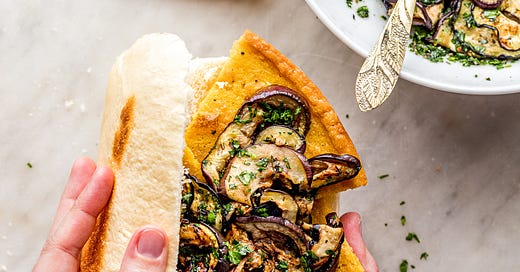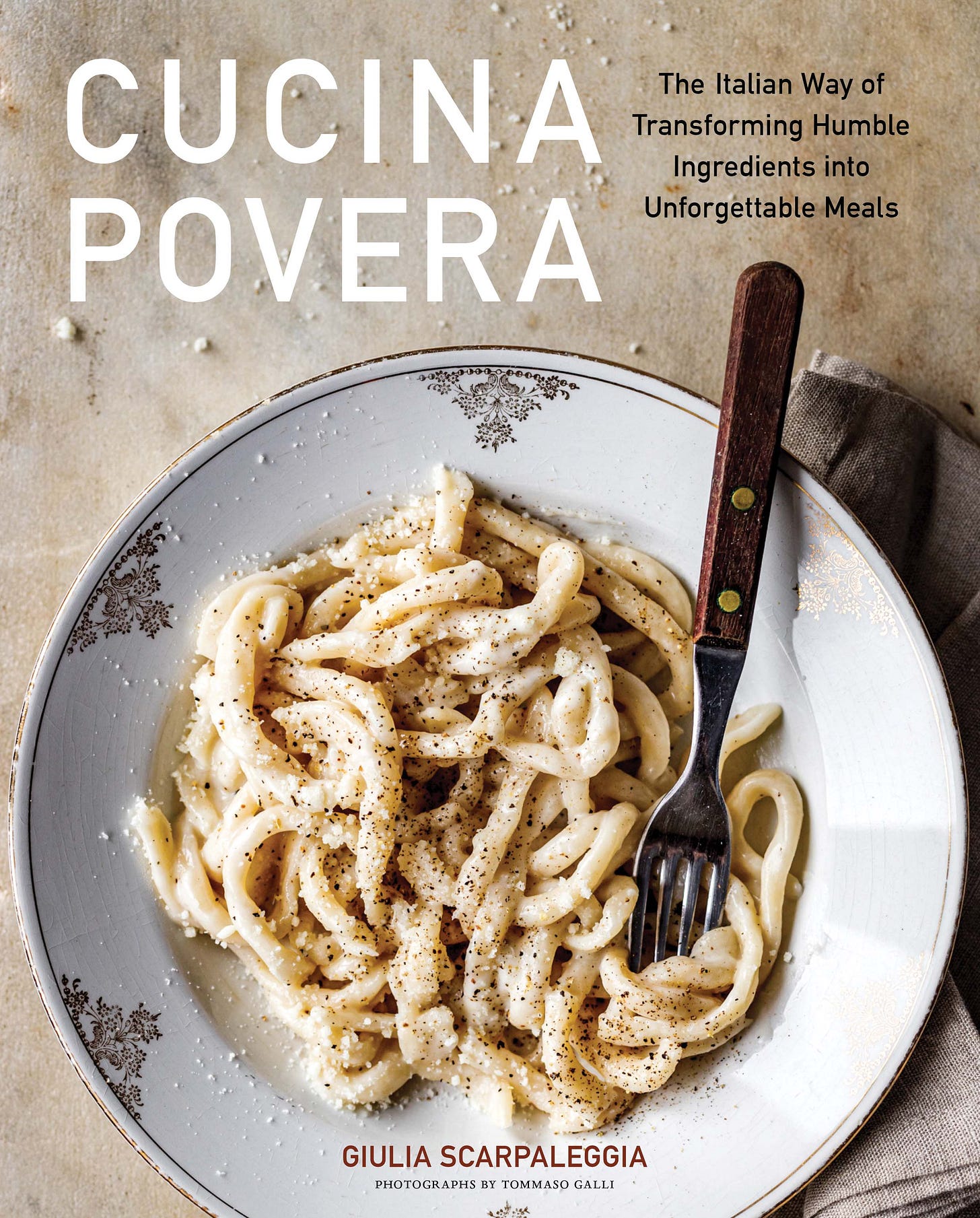Tuscan Cookbook Author Giulia Scarpaleggia's Recipe for Torta di Ceci (Tuscan Chickpea Cake)
Issue #90
A couple of weeks ago, I was in Tuscany with a group of ten American family members and friends. When I began organizing this trip back in March, I wanted to give them an authentic taste of Tuscany far from the crowds—and I knew just the way to do it. I got in touch with
, who writes the excellent Substack , to see if she had a slot available for a cooking class and organized everything else around that. Giulia and I have been reading and commenting on each other’s newsletters for months, so it was a real pleasure to finally meet in person. And I’m happy to report that she’s just as kind and patient a teacher as she is a wonderful writer.She kindly gave me permission to share with you one of the recipes we made during the class: torta di ceci. I was especially eager to learn how to make this recipe because I’ve tasted versions of it during my travels in Tuscany and Liguria, but never attempted to make it. I love that it’s naturally vegan and gluten-free and very simple to make. It’s also proof that there’s so much more to Italian cuisine than pizza and pasta. You can eat it plain, top it with seasonal vegetables, or add them right to the batter, like we did with the class, adding zucchini blossoms to one pan and sliced spring onions to the other.
During the class, Giulia explained that this dish has different names in different regions. In and around Livorno, it’s called torta di ceci. In Liguria, it’s called cecina. In Nice, there’s a similar recipe called socca. And in Sicily, they make a fried version called panelle. It’s usually prepared in wood-fired ovens that reach very high temperatures, but you can make it at home with a normal oven by following these instructions. Without further ado, here’s Giulia’s recipe for torta di ceci, excerpted from her cookbook, Cucina Povera.
In Tuscany, it’s easy to find torta di ceci, a traditional street food, sprinkled with plenty of black pepper and served on a plate or sandwiched in a soft bun or split focaccia. I often prepare torta di ceci as a starter when I give cooking classes or when we have friends over for dinner. Quick to make, it is both vegan and gluten-free. Cut the torta di ceci into slices and arrange them on a board or platter along with a selection of grilled vegetables, such as eggplant, zucchini, and roasted peppers to serve 4 generously.
Torta di ceci (Tuscan Chickpea cake)
Serves 4 as a starter, 2 as a main course
Ingredients:
110 grams (1 1/4 cups) chickpea flour
300 ml (1 1/4 cups) water
2 tablespoons extra-virgin olive oil
3/4 teaspoon fine sea salt
60 ml (1/4 cup) vegetable or other neutral oil
Freshly ground black pepper
Directions:
Make the batter for the chickpea cake: Put the chickpea flour in a medium bowl and slowly add the water, whisking constantly to prevent lumps. Whisk in the olive oil and salt. Let the batter sit at room temperature for a few hours. If any foam accumulates on the surface, skim it off and discard.
Cook the chickpea cake: Place a 10-inch / 25 cm round baking pan or cast-iron skillet in the oven and preheat the oven to 475 degrees Fahrenheit / 250 degrees Celsius.
When the oven is hot, carefully remove the pan from the oven, add the vegetable oil to it, and pour in the batter; it will immediately start to sizzle. Return the pan to the oven and make for 20 to 25 minutes, until the chickpea cake is crunchy and golden on the surface and edges but still soft inside.
Remove the pan from the oven and use a spatula to release the chickpea cake. Slide onto a cutting board and sprinkle with plenty of pepper.
Further Reading:
Be sure to subscribe to Giulia’s newsletter,
, for more recipes and dispatches from Tuscany.This recipe was excerpted from her cookbook, Cucina Povera: The Italian Way of Transforming Humble Ingredients into Unforgettable Meals, which you can order on Amazon.
You can find more info about Giulia’s cooking classes, which take place in the studio kitchen at her family home in Colle di Val d’Elsa, here.
You can see all the recipes in the New Roman Times’ archives here.







Eager to make this— thank you both!!